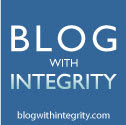For the last year and a half, I’ve had the great pleasure of working with a project called Digital Treasures . As I look back on my cataloging career (a rather long cataloging career), I’m sometimes amazed at the progression. Yet, working on a digital repository is a logical part of that progression.
First, a little history: My first full-time library job consisted of typing headings at the tops of catalog cards (I told you it was a long career). After a couple of weeks, I couldn’t help but think that a machine could do what I was doing – and probably do it a whole lot better. Lo and behold! Along came MaRC (Machine Readable Cataloging) and not only was a machine producing catalog cards with all of the headings correctly typed, but the cards arrived in the library in alphabetical order!
Over time I moved from copy cataloging to original cataloging learning AACR2 (Anglo-American Cataloging Rules, 2nd ed.) and MaRC codes. Then came audiovisual materials where I mulled over GMDs (General Material Designations) and Chief Sources of Information (do I really need to view that videocassette?). As media proliferated, I learned how to apply the rules and codes to CDs, DVDs, CD-ROMs, and remote electronic resources. Each type of item had its own idiosyncrasies that affected how the rules were to be used.
Amid all of this high technology, I also cataloged several Local History collections consisting of privately published material, hand written genealogies and many, many scrapbooks.
Then along came the opportunity to work on Digital Treasures, a cooperative venture of CMRLS, WMRLS and C/W MARS . C/W MARS purchased the software CONTENTdm which uses the metadata schema Dublin Core. (When librarians are describing books, audios and videos, the process is called cataloging. When describing digital resources, the process is called applying metadata.) Dublin Core was designed for digital libraries and is used instead of AACR2 and MaRC. One reason is that Dublin Core is OAI (Open Archives Initiative) harvestable and objects in Digital Treasures can be found by using a keyword search on any search engine.
Digital Treasures has been focusing its efforts on photographs, postcards, newspapers and other items often tucked away in brick and mortar libraries, showing the world these wonderful treasures. What a boon for researchers and the merely curious! If someone is surfing the web for information about railroads in Athol, a search on the words “railroads” “athol” and “mass” immediately brings up items from Digital Treasures. And if you key in the words “calvin” “coolidge” “kart”, you’ll find an image of our nation’s 30th president building a go-kart with his son at their home in Northampton that was scanned into Digital Treasures.
As much as I love visiting a “brick and mortar” library and curling up with a good book, I’m excited by all that digital libraries have to offer. Digital Treasures gathers together the gems hidden in area libraries and makes them available to people everywhere, bringing recognition to the collections and the libraries that house them. Soon, Digital Treasures will be one of the digital libraries accessible via a portal called Digital Commonwealth where people can absolutely wallow in Massachusetts history and culture.
When I think of researchers meandering through digital libraries clicking on links that bring them to more of what they’re looking for, I think back to when I used to type headings onto catalog cards. In addition to producing cards with the headings at the top, machines have made it possible to search immense amounts of information from disparate sources and to allow users to navigate through the great resources libraries have to offer.
Subscribe to:
Post Comments (Atom)


No comments:
Post a Comment